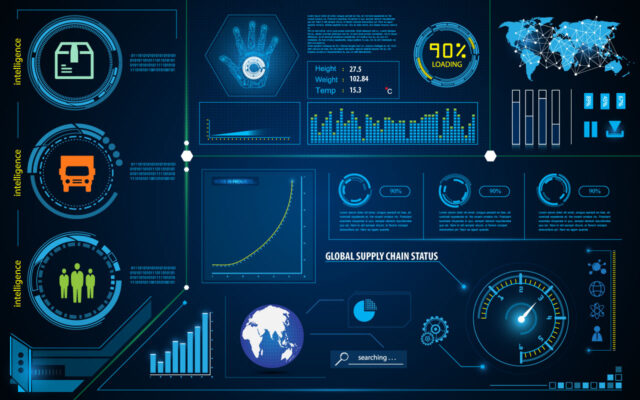RFgen, a leading provider of inventory automation solutions, has released a new ebook,
“Is Your Inventory Agile Enough for Today’s Demands?” that highlights why manufacturers are moving away from legacy inventory systems in favor of mobile solutions. The publication outlines the risks of outdated processes and details how mobile barcoding integrates with ERP platforms like SAP to deliver measurable gains in productivity, traceability, and customer satisfaction.
The Cost of Legacy Inventory Management
For decades, many manufacturers relied on paper processes, spreadsheets, or aging ERP versions to track inventory. While once reliable, these approaches now hinder efficiency in modern supply chains that must operate at the speed of e-commerce.
Industry experts point to labor costs as a key issue. According to RFgen’s Jay Eddinger, if it takes 30 minutes to pick a single order and a company processes 5,500 orders annually, that equates to 2,750 hours of lost time. Multiply that inefficiency across multiple facilities, and the impact is staggering.
Legacy systems also pose business risks. Unsupported ERP versions lack security updates, making companies vulnerable to cyber threats. Institutional knowledge often resides with a few veteran employees who understand outdated workflows, creating operational vulnerabilities if those individuals retire or leave.
Mobile Barcoding as a Digital Transformation Catalyst
Mobile barcoding solves these issues by allowing real-time data collection at the point of work using handheld devices. Inventory updates go straight into ERP systems such as SAP S/4HANA, removing manual entry mistakes and enhancing visibility.
RFgen’s Tatyana Ventura emphasizes that many firms underestimate the true cost of maintaining outdated systems: “Companies rarely calculate the cost of maintaining the status quo. They need to look at the realities of how much a process costs, especially when an order is delayed or sidetracked.”
The ebook highlights several benefits of modern mobile barcoding platforms:
- Improved productivity through faster receiving, putaway, picking, packing, and shipping.
- Enhanced customer experience with accurate order data and shipping transparency.
- Expanded traceability to meet regulatory requirements in industries like food safety and aerospace.
- Futureproofing for Industry 4.0 and Factory of the Future, as AI and machine learning depend on accurate, timely data.
For manufacturers, adopting mobile barcoding is less about incremental improvement and more about laying the foundation for smart factories and next-generation supply chains. Smart inventory management drives operational efficiency while delivering the real-time visibility customers now expect.
What This Means for SAPinsiders
Mobile barcoding will boost SAP warehouse efficiency and transparency. By extending SAP S/4HANA and SAP ECC capabilities directly to the shop floor, mobile barcoding removes reconciliation delays and offers real-time visibility into inventory. This change allows SAP customers to speed up order fulfillment, reduce stockouts, and meet increasing customer expectations for speed and accuracy. The outcome is a more resilient supply chain and better decision-making across the enterprise.
Case studies show that mobile barcoding boosts operational success. Insitu, a manufacturer of aerial defense systems, adopted RFgen integrated with Deltek Costpoint to eliminate manual inventory bottlenecks and improve data accuracy. According to RFgen, the company achieved faster material tracking, reduced cycle times, and minimized costly keypunch errors, strengthening compliance with strict aerospace requirements. For SAP customers, the lesson is clear: integrating mobile barcoding with ERP systems ensures data reliability across complex, regulated supply chains.
Real-time supply chain visibility is becoming an essential market requirement. E-commerce leaders have raised expectations for transparency, accuracy, and speed, pressuring SAP-driven operations to meet these standards. Vendors across the ecosystem, from major ERP providers to specialized niche firms, are competing to deliver mobile-first, ERP-integrated solutions. For SAP insiders, this means multiple adoption paths are available, offering different levels of integration quality and offline resilience. As the market evolves, seamless ERP connectivity, user-friendly interfaces, and offline capabilities are emerging as key differentiators.






